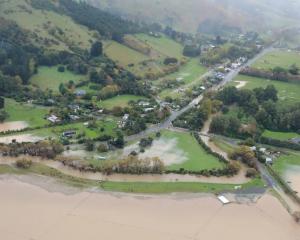
And marine biologist Dr Steve O'Shea, a squid expert at Auckland's University of Technology, says he has a theory that the 495kg female had something to hide when she was accidentally hauled in on a fishing line in the Ross Sea last year.
Measurements done when Dr O'Shea and other researchers thawed and preserved the half-tonne specimen in April showed the main part of the body, known as the mantle, was similar to a 2.5m length recorded for an immature female at the museum in 2003.
But its overall length was only 4.2m, compared with 6m for the immature female recorded in 2003, which was 195kg lighter, suggesting that mature females might get heavier but not longer.
Dr O'Shea said today he had also found the mantle was dark-coloured -- which in other species might mean its purpose was to hide the natural fluorescent glow of smaller squid eaten in the deep ocean.
But colossal squid are thought to mainly eat Antarctic toothfish, which do not glow, and his theory is that the female was "cloaking" thousands of baby squid, each with glowing spots near their eyes.
"If they're eating something that's glowing in the dark, bio-luminescent prey, then the darkness on the inside of the mantle ... shields the light from going outside and exposing the squid to a predator such as a sperm whale," he told Radio New Zealand.
"But we know they are not eating fish with light organs, but juvenile colossal squid do have two little light organs under their eyes.
"It looks like she is brooding many, many thousands of tiny colossal squid inside her mantle - and the darkness will shield the light".
Dr O'Shea told the AFP newsagency that the reputation of the colossal species as an aggressive and dangerous predator may have been over-hyped.
"My research suggests they're not the T-rex of the sea, they get more docile as they mature, a strange phenomenon that has caught scientists off guard," he said.
"We are looking at something verging on the incredibly bizarre. As she got older she got shorter and broader and was reduced to a giant gelatinous blob, carrying many thousands of eggs," he said.
"Her shape was likely to have affected her behaviour and ability to hunt. I can't imagine her jetting herself around in the water at any great speed, and she was too gelatinous to have been a fighting machine.
"It's likely she was just blobbing around the seabed carrying her brood of eggs, living on dead fish, while her mate was off hunting."
The squid has eyes the size of dinner plates -- the biggest known in the animal kingdom -- to help it find prey in the dark of its 1000m below the surface of Antarctic waters.
Two long tentacles carry up to 25 rotating hooks each, while eight arms each contain up to 19 fixed hooks used to capture prey and bring it to the squid's beaked mouth.
The preserved female's standard "rostral" length of the beak was 41 mm, compared with 37mm for the 2003 female, but other beaks of up to 49mm have been found in sperm whale stomachs.
The squid is expected to go on display in its special tank at Te Papa later this year.












